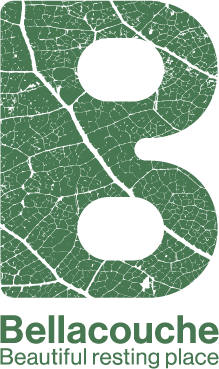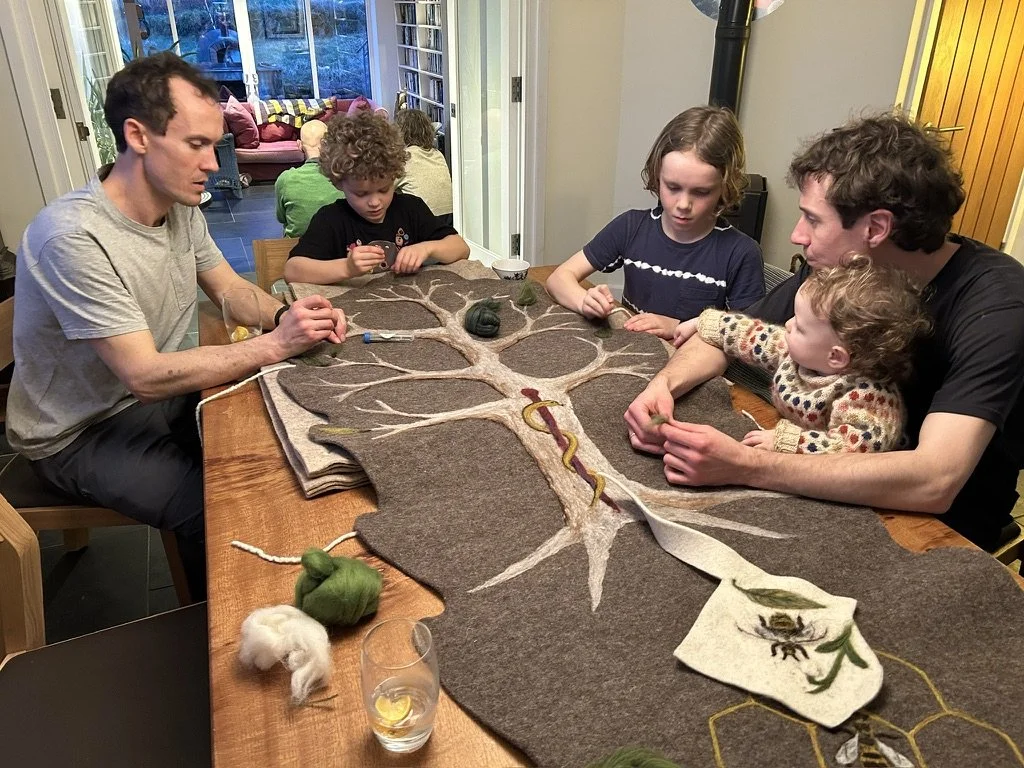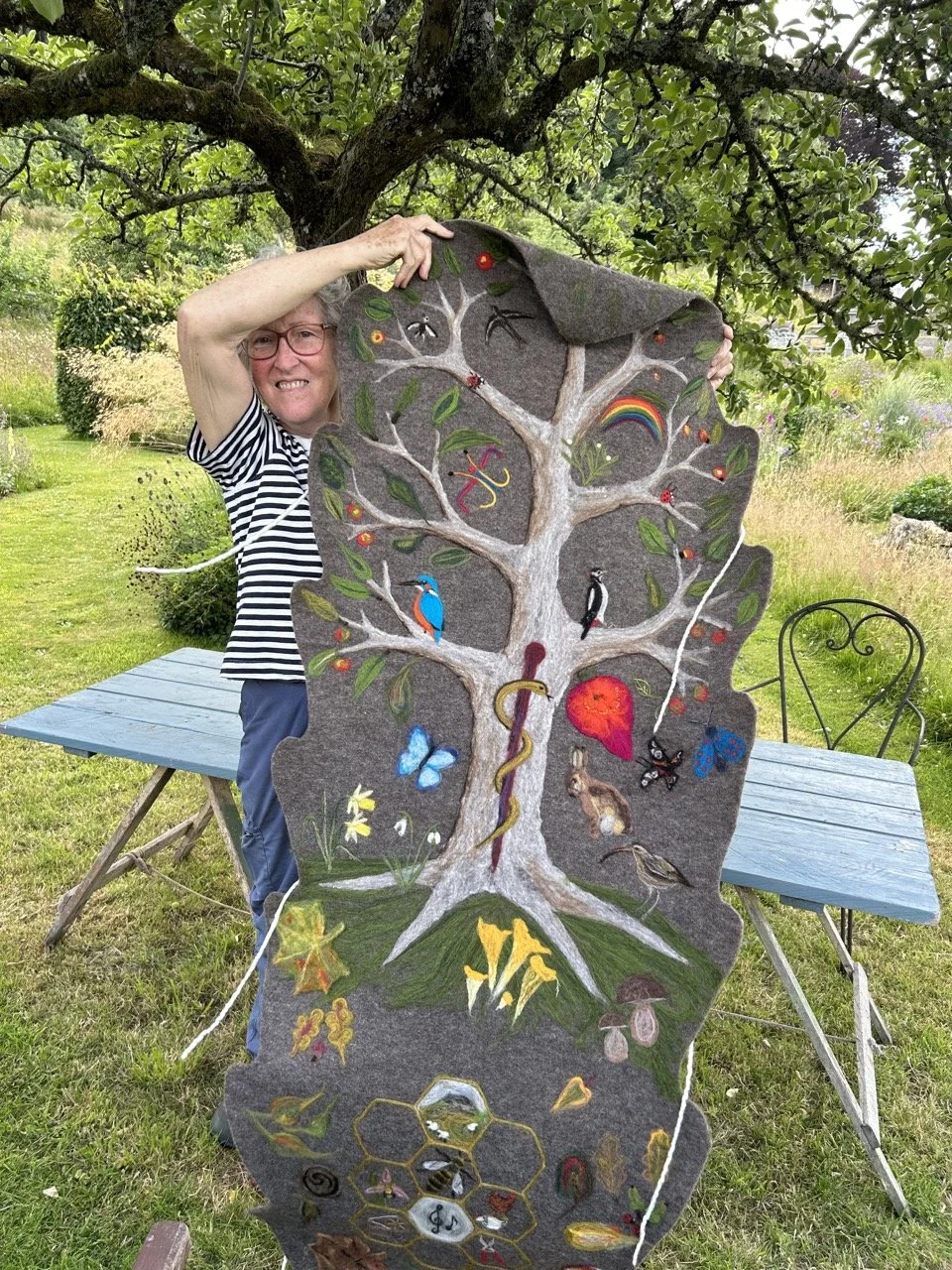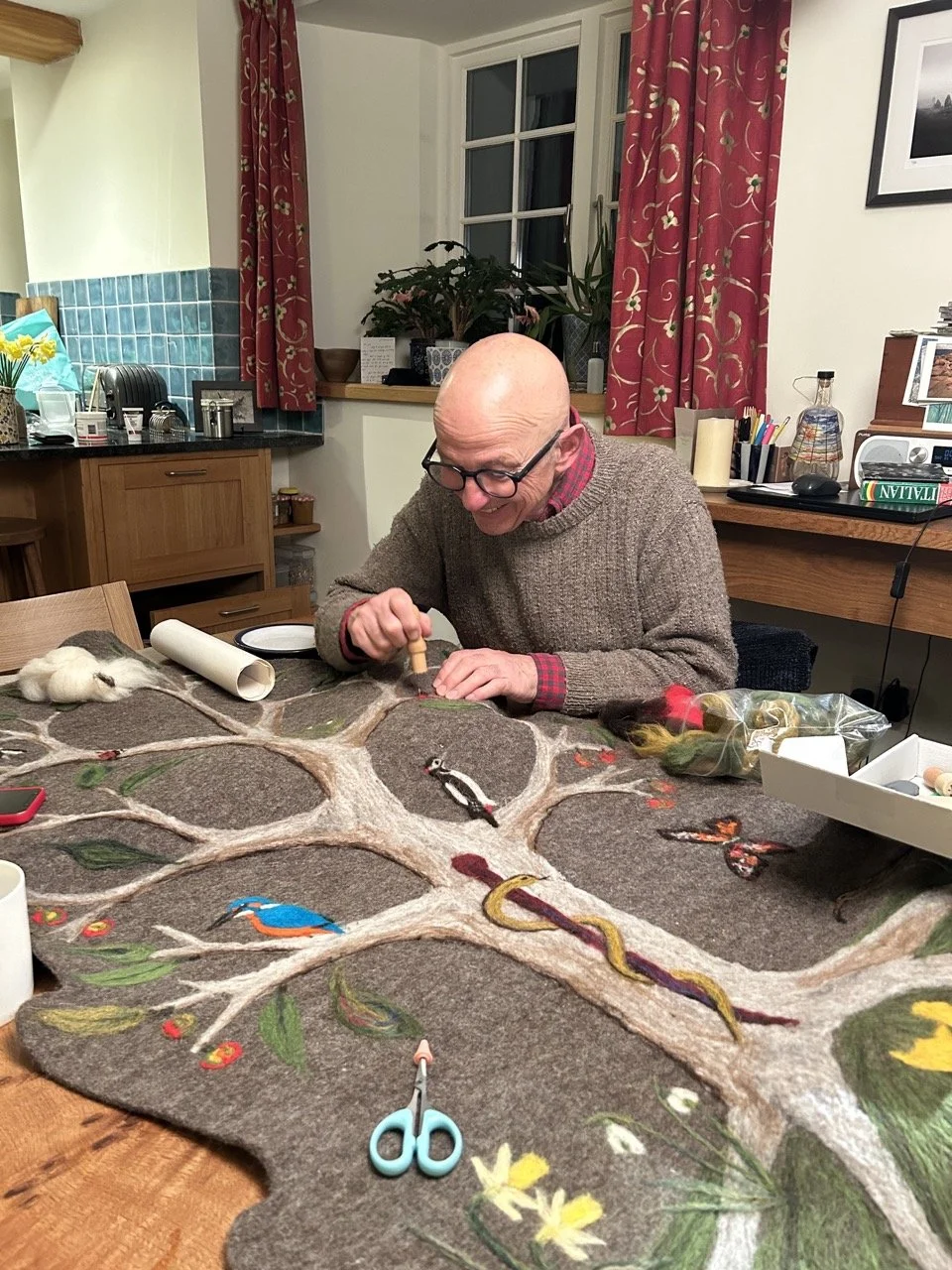Jill’s Shroud Project
Article written by, and with kind permission of Michael Chevalier
How can we involve children in the discussion about death and dying?
Jill Millar's Shroud Project
Dr. Jill Millar, a retired GP facing terminal cancer, has embarked on a remarkable project creating her own burial shroud with the help of family and friends. This deeply personal endeavour reflects her medical background's influence on her approach to death and dying, as well as her determination to break society's taboos around mortality.
Background and Motivation
Jill's experience as a GP, having accompanied many patients through death and witnessed the aftermath, shaped her pragmatic approach to her own terminal diagnosis. When told her cancer was incurable, she found the news less frightening than it might be for others, understanding what lay ahead. Rather than viewing death as defeat, she sees it as a natural conclusion that will spare her from dementia, decrepitude, and witnessing climate change's worst effects.
Her frustration with society's reluctance to discuss death openly - particularly the euphemistic use of "passing" instead of "dying" - motivated her to model a different approach. The shroud project became part of her mission to normalize conversations about mortality.
The Shroud Creation Process
Jill and her shroud cover
The felt shroud, made by local artisan Yuli, serves as both burial garment and collaborative art project. Jill had previously used one of Yuli's shrouds for her mother's burial in 2013, choosing it as an environmentally sound alternative to traditional coffins. The felt material appealed to her sense of returning to earth in something "cozy and soft."
Working primarily with her daughter Meg (an artistic furniture maker) and sister, Jill designed the shroud around central motifs: a tree of life representing family connections, and a honeycomb reflecting her beekeeping. The Aesculapius rod symbolizes her medical career. The design process involves needle felting, where wool can be moved and adjusted, making it accessible to people with varying craft skills.
Aesculapius rod
Community Participation and Conversations
Jill has invited numerous friends and family members to contribute elements to the shroud. Some embraced the opportunity immediately, while others were initially hesitant but later became enthusiastic participants. The collaborative sessions, often involving half a dozen people, create a companionable atmosphere that naturally facilitates conversations about death and life's meaning.
Jill’s partner, Ralph
Contributors have added personal touches: woodpeckers and butterflies from artist friends, leaves from distant friends, acorns representing the Royal College of GPs, and fungi reflecting shared foraging experiences. Even her young grandsons, aged 9 and 7 when they participated by creating leaves, with their parents managing age-appropriate discussions about their grandmother's illness.
Symbols and Meaning
The shroud incorporates elements significant to Jill's life: swifts (she maintains swift boxes), curlews (representing endangered Dartmoor wildlife), snowdrops and daffodils (from her garden), music notation, secateurs (for gardening), and creatures like newts and worms (representing the cycle of life and death). One especially moving addition is a felt piece from a GP colleague with the message "thank you for your wisdom."
Broader Impact
Beyond personal significance, the shroud project serves multiple purposes: it provides a vehicle for honest conversations about death, offers family and friends a meaningful way to contribute to Jill's final journey, and creates lasting memories through shared creative activity. The project exemplifies Jill's belief that death should be discussed openly rather than hidden behind euphemisms.
Jill plans to be buried at Epona, a newly licensed natural burial ground on Dartmoor, where the shroud will accompany her into the earth. She hopes her approach will encourage others to consider similar projects, viewing the shroud-making process as "uplifting" and "affirming" rather than morbid.
Through this project, Dr. Jill Millar transforms her final chapter into an opportunity for connection, creativity, and breaking down the cultural barriers that prevent honest discussions about mortality.
Just some of the contributions from friends and family, symbols encapsulating Jill’s many interests within a honeycombe frame. An ongoing project…





